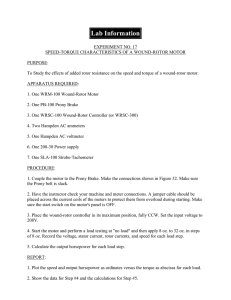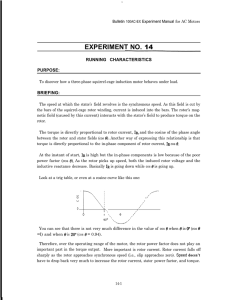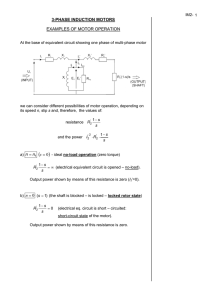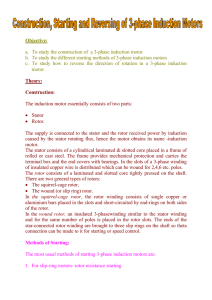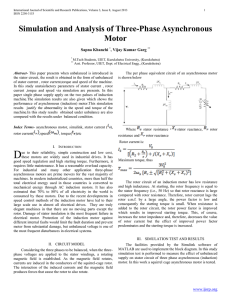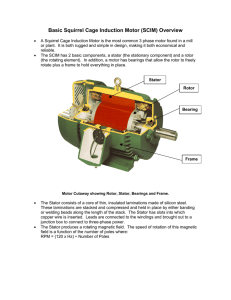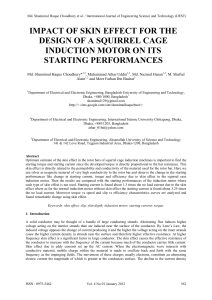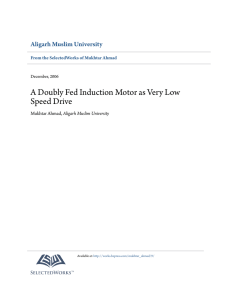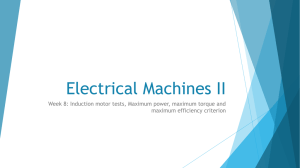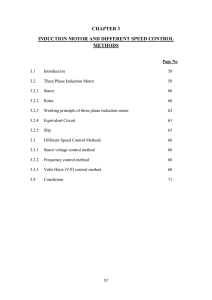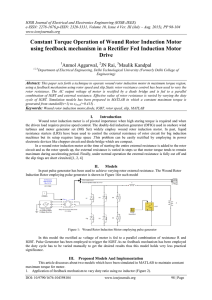Practical Work Week 7
advertisement
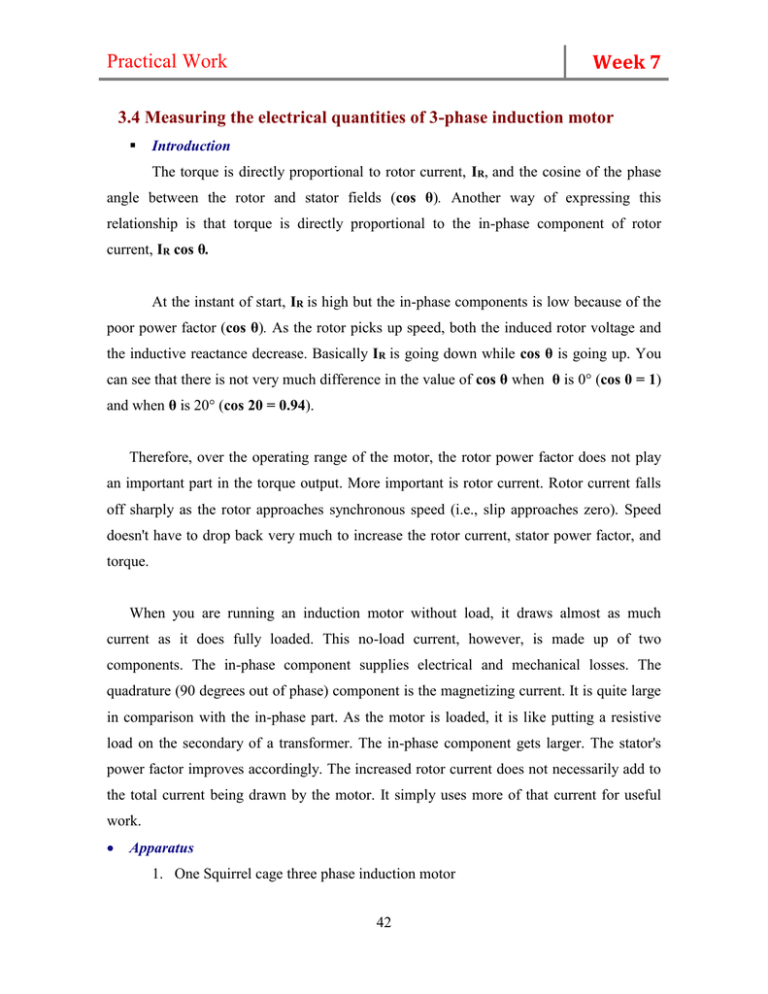
Week 7 Practical Work 3.4 Measuring the electrical quantities of 3-phase induction motor Introduction The torque is directly proportional to rotor current, IR, and the cosine of the phase angle between the rotor and stator fields (cos θ). Another way of expressing this relationship is that torque is directly proportional to the in-phase component of rotor current, IR cos θ. At the instant of start, IR is high but the in-phase components is low because of the poor power factor (cos θ). As the rotor picks up speed, both the induced rotor voltage and the inductive reactance decrease. Basically IR is going down while cos θ is going up. You can see that there is not very much difference in the value of cos θ when θ is 0° (cos 0 = 1) and when θ is 20° (cos 20 = 0.94). Therefore, over the operating range of the motor, the rotor power factor does not play an important part in the torque output. More important is rotor current. Rotor current falls off sharply as the rotor approaches synchronous speed (i.e., slip approaches zero). Speed doesn't have to drop back very much to increase the rotor current, stator power factor, and torque. When you are running an induction motor without load, it draws almost as much current as it does fully loaded. This no-load current, however, is made up of two components. The in-phase component supplies electrical and mechanical losses. The quadrature (90 degrees out of phase) component is the magnetizing current. It is quite large in comparison with the in-phase part. As the motor is loaded, it is like putting a resistive load on the secondary of a transformer. The in-phase component gets larger. The stator's power factor improves accordingly. The increased rotor current does not necessarily add to the total current being drawn by the motor. It simply uses more of that current for useful work. Apparatus 1. One Squirrel cage three phase induction motor 42 Week 7 Practical Work 2. One prony brak 3. One power supply 4. One AC instrumentation group 5. Two wattmeter 6. One tachometer Procedure 1. Couple and clamp the machine with tachometer and prony brake 2. Connect the motor and instruments as shown in figure 3- 12 3. Start the motor under no load and make sure its rotation is in the "right direction for the scale of the Prony brake. 4. Load the motor in six steps to 125% of rated capacity. 5. Record your readings in Table in your worksheet for each step. 6. Turn off the power supply. A L1 Supply L2 3Ø 0-415V Ac N Prony brake W1 Stator W2 V1 Tach U1 U2 V2 V W2 W1 L3 Figure (3-12): 3-phase induction motor circuit diagram 43 Rotor Week 7 Practical Work Worksheet 07 Solve the following questions: 1. Connect the circuit as shown in figure 3-12, Operate, record your results in Table 3-5 Torque (T) (N.m) Line voltage (VL) (Volts) Line current(IL ) (Ampere) Speed (N) (RPM) Power(P) P =W1 +W2 (KW) Table 3-5 Torque (T) (N.m) 44 Power Factor (P.F) Week 7 Practical Work 2. Calculate the power factor and record your results in Table 3-6 Table 3-6 3.plot the graph (3-5) of the torque versus motor current 45 Week 7 Practical Work Graph 3-5 : the relationship (T VS Motor Current) 4.plot the graph (3-6) of the torque versus power factor 46 Week 7 Practical Work Graph 3-6 : the relationship (T VS p.f.) 47

